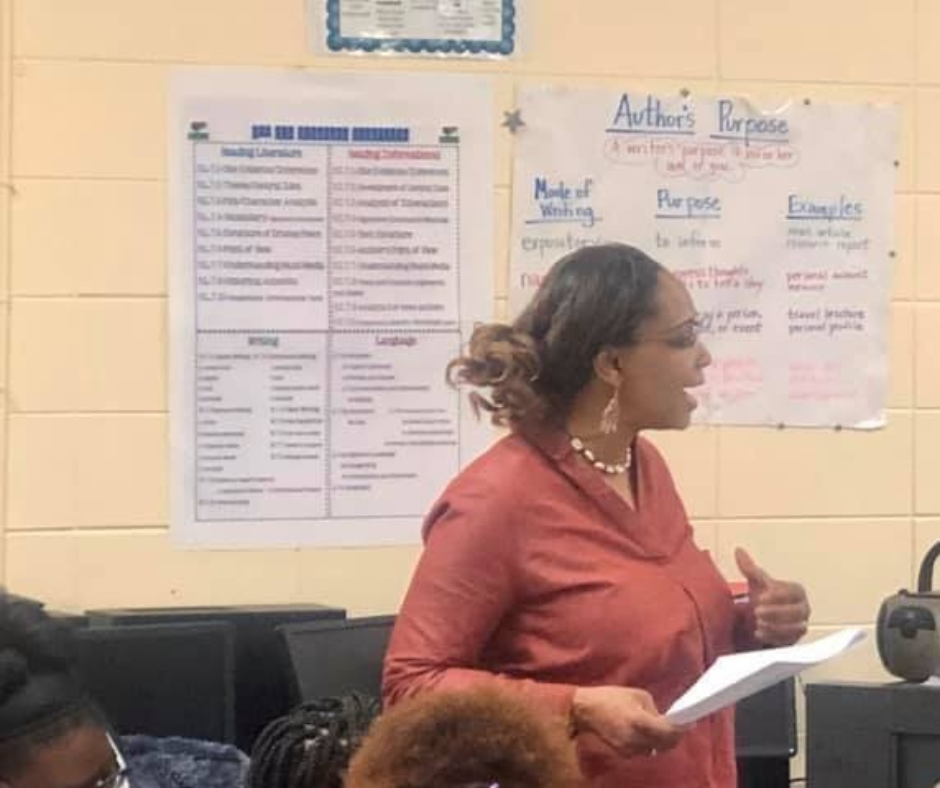What is one of the simplest yet most important things that you can do for your students? Besides providing them with a quality education, it is being consistent. 
What Exactly Is Consistency?
First things first. Let’s break down what consistency means in the context of teaching. Consistency is maintaining a steady and predictable approach to teaching, so your students know what to expect and when to expect it.
Let’s be honest. We all like some predictability. Sure, you might like to be spontaneous at times. But, chances are good that you want some stability more often than spontaneity. I know I do.
Think of consistency as the thread that weaves through your daily teaching routine. It means sticking to a set of rules, expectations, and routines that you establish for your classroom and then maintaining them consistently. It’s all about reliability and stability.
Why Consistency Matters in Teaching
Now that we’ve got a grip on what consistency is, let’s talk about why it’s so important in the world of education.
Discipline: The Backbone of Learning
Discipline is NOT a “naughty” word. It is not always about punishing a student. It is about structure. It is about consequences and accountability. It is the backbone of effective teaching. It’s what keeps your classroom running like a well-oiled machine. And guess what? Consistency is the key to building and maintaining discipline.
When you’re consistent in your classroom management strategies, students understand the boundaries, rules, and consequences. This predictability helps create a safe and structured environment where learning can flourish. It’s like setting up guardrails on a winding road; it keeps everyone on track.
The Magic of Decreasing Behavioral Problems

Who wants decreased discipline problems?I do! And, one of the ways to decrease behavioral problems in your classroom is through consistency. Ah, behavioral problems—the thorn in the side of many teachers. But fear not, because consistency is your trusty sidekick in taming this wild beast.
By consistently enforcing rules and expectations, students learn that their actions have consequences. If you say you’ll deduct points for incomplete homework, you better do it every time. When students realize that you mean business, they’re more likely to stay on the right path.
My students hate it when I repeatedly go over the rules. But, I have learned that they need repetition. So, the first few days of school I continuously repeat the rules over and over again. When they break the rules, I make it a point to go over them yet again. I also hang them in my room in a spot where they are hard to miss. Why do I do this? This ensures that I am consistent. And, that they know what to expect when certain behaviors is presented.
Consistency also helps in addressing behavioral issues promptly. If you nip problems in the bud with the same response each time, students understand that certain behaviors won’t be tolerated in your classroom. Over time, they’re more likely to adjust their actions to align with your expectations.
Ways Teachers Can Master the Art of Consistency

Now that we’ve covered why consistency is important, let’s dive into some practical ways to make it a reality in your classroom.
Set Clear Expectations
The first step in being consistent is to establish clear expectations. Begin the very FIRST DAY of SCHOOL! Go over your rules and expectations with your students and discuss what behavior, effort, and participation you expect from them. Make sure these expectations are realistic and achievable.
Develop a Classroom Routine
Routines are important for both you and your students. Create a daily or weekly schedule and stick to it as closely as possible. Students thrive in predictable environments, so knowing what to expect when they walk into your classroom sets a positive tone for learning. And, I have found that once a routine is established, the students will follow it even if I am not present.
Be Fair and Impartial
Consistency also means treating all your students fairly. This doesn’t mean you can’t have a sense of humor or personalized interactions, but when it comes to rules and consequences, be impartial. Everyone should face the same consequences for the same behavior.
Follow Through on Promises
When you make a promise, whether it’s a reward for good behavior or a consequence for misbehavior, follow through. If you consistently keep your word, students will take you seriously and trust your judgment.
Communicate Effectively
Open and clear communication is key to consistency. Let students and parents know your classroom rules and expectations from day one. Use channels like emails, newsletters, or class websites to keep everyone informed.
Stay Calm and Patient
Maintaining consistency can be challenging especially when dealing with repeated behavioral issues. However, it’s crucial to stay calm and patient. Losing your temper or reacting emotionally can undermine your consistency and authority.
And, if you teach middle school, your students are just waiting for you to blow a gasket. Middle school students thrive on drama. That’s why I try to make it a point not to raise my voice or get noticeably angry.
Reflect and Adjust
Lastly, don’t be afraid to evaluate your own consistency. Regularly reflect on your teaching methods and how you enforce rules. Are there areas where you could improve? Are there consequences that aren’t effective? Be open to making adjustments to enhance your consistency.
No one wants to be the villain. (Well, maybe, I do sometimes
By setting clear expectations, maintaining routines, and communicating effectively, you can master the art of consistency and create a learning environment where both you and your students can thrive.
Happy Teaching!!!


